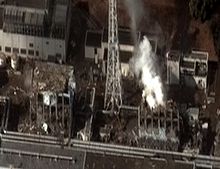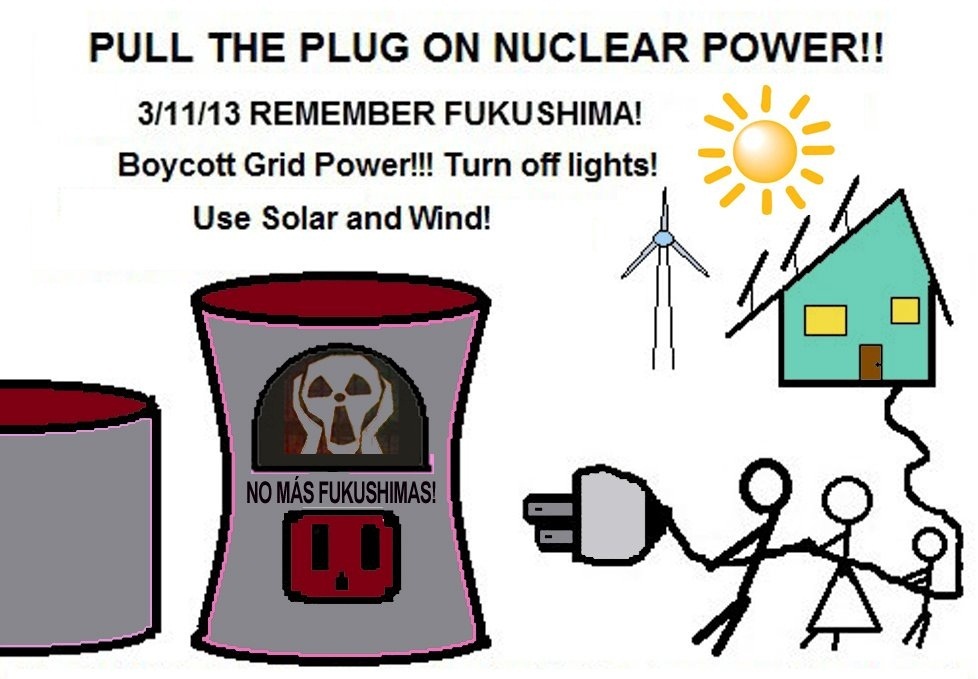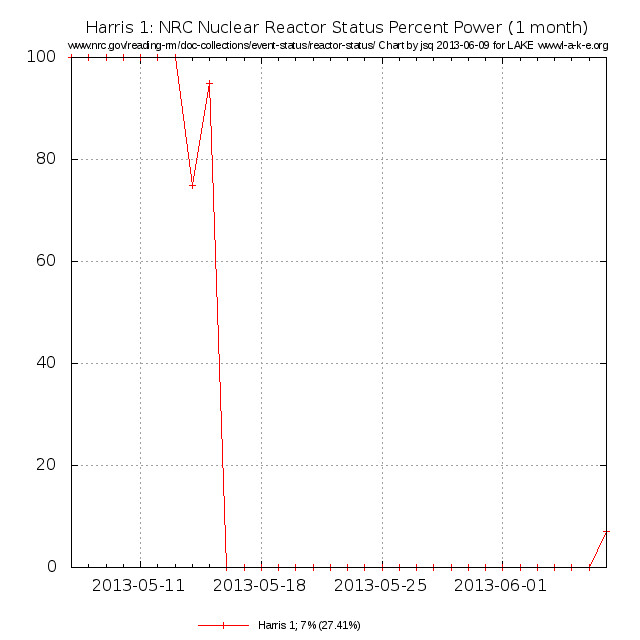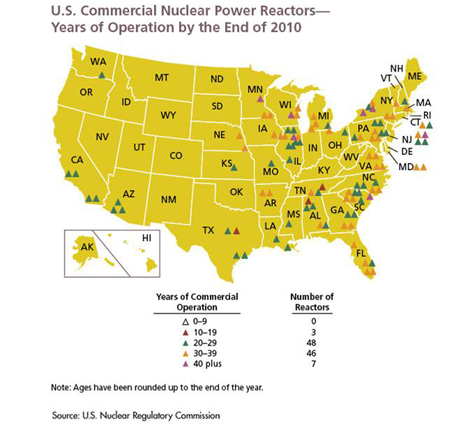Tomorrow is the second anniversary of the earthquake and tsunami
that heavily damaged four of the six nuclear reactors at
 Fukushima Dai-ichi in Japan on 11 March 2011, also known as 3/11.
The broken reactors at Fukushima continue to leak radioactive substances into
groundwater, the sea, and the air, where it is carried across oceans
to the U.S. and elsewhere.
And it could still get much worse:
if the No. 4 reactor pool, still suspended in the air, collapses and causes
the disintegration of spent fuel rods from all the other reactors there,
Tokyo, 200 miles away, will have to be evacuated.
Fukushima’s GE reactors are the same GE Mark I design as Southern Company’s
Plant Hatch 1 and 2 only 100 miles from here at Baxley, GA,
and about 200 miles from Atlanta and Charleston.
Hatch
is leaking radioactive tritium into our groundwater again.
Five more reactors
within 500 miles of here
are also GE Mark I.
Fukushima Dai-ichi in Japan on 11 March 2011, also known as 3/11.
The broken reactors at Fukushima continue to leak radioactive substances into
groundwater, the sea, and the air, where it is carried across oceans
to the U.S. and elsewhere.
And it could still get much worse:
if the No. 4 reactor pool, still suspended in the air, collapses and causes
the disintegration of spent fuel rods from all the other reactors there,
Tokyo, 200 miles away, will have to be evacuated.
Fukushima’s GE reactors are the same GE Mark I design as Southern Company’s
Plant Hatch 1 and 2 only 100 miles from here at Baxley, GA,
and about 200 miles from Atlanta and Charleston.
Hatch
is leaking radioactive tritium into our groundwater again.
Five more reactors
within 500 miles of here
are also GE Mark I.
 Among the 311 or so facebook pages and websites about Fukushima
or against nuclear power is this concise one,
Unplug Nuclear Power,
which offers a simple action anyone can take tomorrow:
Among the 311 or so facebook pages and websites about Fukushima
or against nuclear power is this concise one,
Unplug Nuclear Power,
which offers a simple action anyone can take tomorrow:
On 3/11, we will mark Fukushima day by using as little utility
supplied electricity as possible. This direct Action is designed to
punish the utility companies for continuing to push for nuclear
power even after the Fukushima disaster has proven that it is just
too dangerous. On that day, we will punish them in the only way that
they understand, by denying them our money. There will be four
levels of participation, go to the website,
www.unplugnuclearpower.com for a more complete description. Also, be
sure to join the Event. Finally, if you are in a group our
organization that can endorse this Action, please let us know.
As
Jeremy Rifkin so concisely spelled out,
nuclear power is over
Continue reading →
We also know from news reports in 2011 that TEPCO ran around the Fukushima facility turning off the radiation detectors to prevent alarms from going off. Radiation? What radiation?





